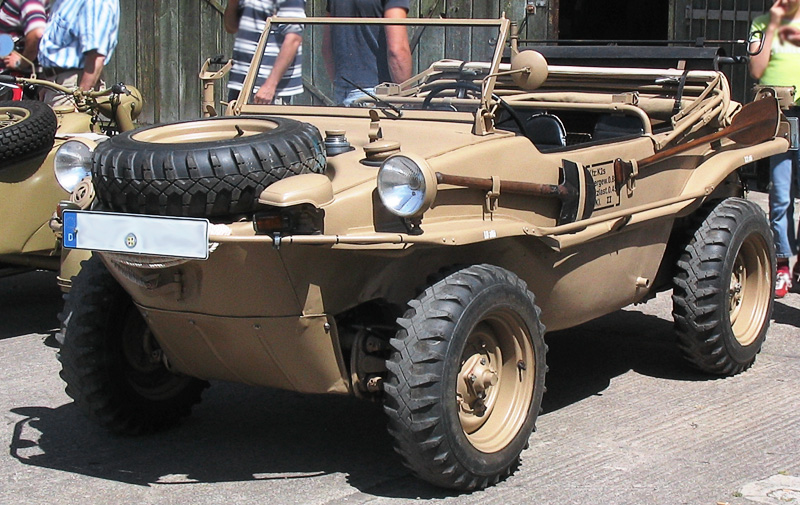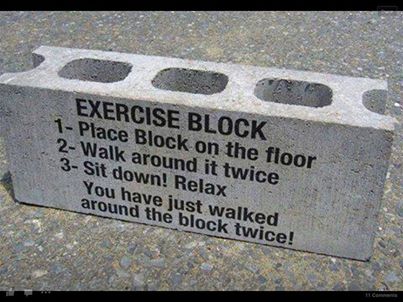You are using an out of date browser. It may not display this or other websites correctly.
You should upgrade or use an alternative browser.
You should upgrade or use an alternative browser.
Spraying water into a hot engine
- Thread starter Horse
- Start date
ifly4fun
Line Up and Wait
Not smart. I've been around the block a few times. More than a few times.
Around the block isn't around the pattern. Glad you enjoy going in circles!
jaybee
Cleared for Takeoff
not that i agree with the OP in any manner.... for your consideration... an air cooled water vehicle...


ircphoenix
En-Route
Next time try that insult to someone's face instead of hiding behind a keyboard. Tough guy.
I'll hide behind my yoke while you shake your fist angrily at me from the ground, next to a shelled out rental engine. =D
I've been around the block a few times. More than a few times.
I've been around the block myself a few times.
Which block have you been around so many times?

GlennAB1
Ejection Handle Pulled
- Joined
- Oct 5, 2015
- Messages
- 4,889
- Location
- Home will always be Vandalia, OH
- Display Name
Display name:
GlennAB1
I actually hope they find the engine damaged now...Hey I'm done I got my answer it was in the first few responses. One word: Rain. More water gets dumped into that engine flying in rain than my maybe 2 gallons of warm spray I got into that engine.
Thanks for the help guys. No seriously THANKS.
jaybee
Cleared for Takeoff
18" concrete block ?
SkyDog58
Ejection Handle Pulled
- Joined
- Jun 11, 2015
- Messages
- 14,601
- Location
- My own special place.
- Display Name
Display name:
Canis Non Grata
Horse
Ejection Handle Pulled
- Joined
- Aug 19, 2016
- Messages
- 47
- Display Name
Display name:
Pilot called Horse
I'll hide behind my yoke while you shake your fist angrily at me from the ground, next to a shelled out rental engine. =D
Not me. I don't shake fists at anyone. I'm a gentle soul.

I just LOLed! Hahaha
gitmo234
Line Up and Wait
Another point to consider is an engine continuing to produce heat in a cold environment vs an engine not producing heat suddenly exposed to cold. Possible to damage the engine? yes. Likely? well that depends on the delta-T (spelled out since I cant find the fancy symbol). But since none of us have extensive study in metal reactions to thermodynamic changes, we'll never know. Troll on
Horse
Ejection Handle Pulled
- Joined
- Aug 19, 2016
- Messages
- 47
- Display Name
Display name:
Pilot called Horse
GlennAB1
Ejection Handle Pulled
- Joined
- Oct 5, 2015
- Messages
- 4,889
- Location
- Home will always be Vandalia, OH
- Display Name
Display name:
GlennAB1
Another point to consider is an engine continuing to produce heat in a cold environment vs an engine not producing heat suddenly exposed to cold. Possible to damage the engine? yes. Likely? well that depends on the delta-T (spelled out since I cant find the fancy symbol). But since none of us have extensive study in metal reactions to thermodynamic changes, we'll never know. Troll on
See AC 20-105B, 4. g.
Do you think the FAA just made it up?
gitmo234
Line Up and Wait
See AC 20-105B, 4. g.
Do you think the FAA just made it up?
I know they didn't. I ruined a car engine when I was 16 because of my sarcastic comment above. It was my first car, it over heated, so naturally i wanted to cool it and I filled it full of cold water ASAP. CRACK.
I'm referring to all the other scientists on here comparing apples and oranges to come to conclusions on potatoes
gitmo234
Line Up and Wait
And as a follow up, last year I was in a graduate space systems engineering class and we had to address this very issue while designing satellites. When the sunlight hits its extremely hot. When it stops the temperature suddenly drops. Causes all sorts of nasty problems (like cracking) since it's not producing any (significant) heat of its own.
PaulS
Touchdown! Greaser!
Did someone say space???? (skip to 1:00 minute, my youtube foo is weak)
Tom-D
Taxi to Parking
- Joined
- Feb 23, 2005
- Messages
- 34,740
- Display Name
Display name:
Tom-D
That is how it usually gets done.See AC 20-105B, 4. g.
Do you think the FAA just made it up?
I don't see the relevance of the AC to the OP's case. nothing there about quick cooling of the aluminum of any part. just the pilots make mistakes and cause engine failures.
Tom-D
Taxi to Parking
- Joined
- Feb 23, 2005
- Messages
- 34,740
- Display Name
Display name:
Tom-D
When did we start making aircraft engine from cast iron? If your engine were under 300 degrees do you think it would have cracked?I know they didn't. I ruined a car engine when I was 16 because of my sarcastic comment above. It was my first car, it over heated, so naturally i wanted to cool it and I filled it full of cold water ASAP. CRACK.
I'm referring to all the other scientists on here comparing apples and oranges to come to conclusions on potatoes
gitmo234
Line Up and Wait
That is how it usually gets done.
I don't see the relevance of the AC to the OP's case. nothing there about quick cooling of the aluminum of any part. just the pilots make mistakes and cause engine failures.
"Engine cylinders and valves can be damaged by thermal shock if the engine is not properly warmed up, prior to full power applications, or the cylinder heads can crack by allowing the engine temperature to cool off too rapidly in long gliding descents at reduced power."
(countdown until this post is either answered with a question or "that says nothing about aluminum")
gitmo234
Line Up and Wait
When did we start making aircraft engine from cast iron? If your engine were under 300 degrees do you think it would have cracked?
Please go on and tell me the make and model of my car since cast iron engines began being phased out in the early 90s and aluminum started becoming more popular. The likely hood of cracking depends on the metal as much as thermal difference
Cajun_Flyer
Pattern Altitude
Which block have you been around so many times?
I think he means he has BEEN blocked (here) so many times.
Tom-D
Taxi to Parking
- Joined
- Feb 23, 2005
- Messages
- 34,740
- Display Name
Display name:
Tom-D
you, like many, have missed the point again. A drop temp from under 300 degrees to ambient is not enough to cause any damage in any aluminum parts we find in aircraft engines. I don't care if he used ice water and dunked it. Until you can prove other wise get a grip."Engine cylinders and valves can be damaged by thermal shock if the engine is not properly warmed up, prior to full power applications, or the cylinder heads can crack by allowing the engine temperature to cool off too rapidly in long gliding descents at reduced power."
(countdown until this post is either answered with a question or "that says nothing about aluminum")
gitmo234
Line Up and Wait
you, like many, have missed the point again. A drop temp from under 300 degrees to ambient is not enough to cause any damage in any aluminum parts we find in aircraft engines. I don't care if he used ice water and dunked it. Until you can prove other wise get a grip.
I'll let science know they're wrong. In the mean time you can look up the linear expansion formula and do the calculations yourself. I hear rapid change is good for metals we depend on
Tom-D
Taxi to Parking
- Joined
- Feb 23, 2005
- Messages
- 34,740
- Display Name
Display name:
Tom-D
show me. or quit.I'll let science know they're wrong. In the mean time you can look up the linear expansion formula and do the calculations yourself. I hear rapid change is good for metals we depend on
gitmo234
Line Up and Wait
You're the one going against physics. Show me or you quit. Here some formulas to get you started. And you'll need the aluminum expansion rate, which is something like .0023 per meter per 40 degrees change, but don't quote me on that. I haven't used it since January
http://formulas.tutorvista.com/physics/thermal-expansion-formula.html?view=simple
http://formulas.tutorvista.com/physics/thermal-expansion-formula.html?view=simple
Horse
Ejection Handle Pulled
- Joined
- Aug 19, 2016
- Messages
- 47
- Display Name
Display name:
Pilot called Horse
I'm looking forward to this calculation... Plug in 230 F cylinder temperature and 75 F for the water. According to my calculations we will get 1/1000" change in dimensions of cylinder. Horrifying!!!! Oh and that is assuming it is dunked in water. In this case it is not. The water is a spray getting heated up as it travels into the cowling and then only gets maybe a 5% coverage. So I'm going to go with an even smaller change in dimensions. Maybe a 1/10000" contraction. Ooh the horror!
I'm going to tell my CFI to keep sucking that egg.
I'm going to tell my CFI to keep sucking that egg.
James331
Ejection Handle Pulled
- Joined
- Apr 18, 2014
- Messages
- 20,309
- Display Name
Display name:
James331
Please go on and tell me the make and model of my car since cast iron engines began being phased out in the early 90s and aluminum started becoming more popular. The likely hood of cracking depends on the metal as much as thermal difference
Yup, even older performance cars and bikes have been using aluminum as standard issue for some time.
Horse
Ejection Handle Pulled
- Joined
- Aug 19, 2016
- Messages
- 47
- Display Name
Display name:
Pilot called Horse
I'm sure I'm being overly curious.. but... the engine in a VW Bus is in the BACK and the picture showed a VW Bus that was partially submerged in the FRONT.
Funny how this works.. You see that VW bus is going forward as is evidenced by the splashing of the water. Usually when a rigid object such as a bus moves forward, eventually the rear end will be where the forward end is. So at some point further along, that rear of that VW bus will be where you see the front at the moment. In the water. Submerged. That poor, poor engine.
Shock cooling is a horrible thing and very real. Be afraid everyone.
PaulS
Touchdown! Greaser!
Show your math, that doesn't sound right.I'm looking forward to this calculation... Plug in 230 F cylinder temperature and 75 F for the water. According to my calculations we will get 1/1000" change in dimensions of cylinder. Horrifying!!!! Oh and that is assuming it is dunked in water. In this case it is not. The water is a spray getting heated up as it travels into the cowling and then only gets maybe a 5% coverage. So I'm going to go with an even smaller change in dimensions. Maybe a 1/10000" contraction. Ooh the horror!
I'm going to tell my CFI to keep sucking that egg.
Horse
Ejection Handle Pulled
- Joined
- Aug 19, 2016
- Messages
- 47
- Display Name
Display name:
Pilot called Horse
Show your math, that doesn't sound right.
Thanks for that, you're right, I messed up. It is even less than that. There is no way the exterior of that cylinder was still 230 F after that amount of time.
Mike Smith
En-Route
- Joined
- May 15, 2011
- Messages
- 2,626
- Location
- Prattville, Alabama
- Display Name
Display name:
Fresh Prince of PrattVegas

Sent from my iPhone using Tapatalk
PaulS
Touchdown! Greaser!
Thanks for that, you're right, I messed up. It is even less than that. There is no way the exterior of that cylinder was still 230 F after that amount of time.
Still wrong, show your work and we'll figure out where you messed up, maths is hard.
gitmo234
Line Up and Wait
Funny how this works.. You see that VW bus is going forward as is evidenced by the splashing of the water. Usually when a rigid object such as a bus moves forward, eventually the rear end will be where the forward end is. So at some point further along, that rear of that VW bus will be where you see the front at the moment. In the water. Submerged. That poor, poor engine.
Shock cooling is a horrible thing and very real. Be afraid everyone.
That poor engine is still producing heat.same reason vehicles can run in Antarctica. The key here is the sudden change. You should also re-check the temperature of your water. Then again, like I said, go ahead and run your car and spray down the block every time you're done. I'm sure you're experienced enough to know it will be fine.
Ultimately, all engines are air cooled. Where else can the heat go?
GlennAB1
Ejection Handle Pulled
- Joined
- Oct 5, 2015
- Messages
- 4,889
- Location
- Home will always be Vandalia, OH
- Display Name
Display name:
GlennAB1
While both the car and airplane engine start at ambient temperature, the auto engine temperature tops out not far above 200° F, while the aircraft engine temperature closes in on 500° F. http://www.flyingmag.com/safety/maintenance/piston-engine-essentials Engine temperatures increase after shutdown. And, what was the OAT that day? On a hot day we have to wait 5 hours before we can borecsope some engines when we normally wait 3, due to equipment temperature restrictions.Thanks for that, you're right, I messed up. It is even less than that. There is no way the exterior of that cylinder was still 230 F after that amount of time.
Last edited:
Tom-D
Taxi to Parking
- Joined
- Feb 23, 2005
- Messages
- 34,740
- Display Name
Display name:
Tom-D
Have you ever seen how fast an turbocharged TSIO 540 cools when the outside air-temps are -40?That poor engine is still producing heat.same reason vehicles can run in Antarctica. The key here is the sudden change. You should also re-check the temperature of your water. Then again, like I said, go ahead and run your car and spray down the block every time you're done. I'm sure you're experienced enough to know it will be fine.
Part 135 operators operate these engines day in and day out cycle after cycle, with no problems. You pull power on a Navajo Chieftain and the CHTs will go down faster than the gauge can keep up.. Shock Cooling at it best, and never a problem of cracking.
Yet folks here believe one time from less than 300 degrees has done damage. Some one needs to get real.
Tom-D
Taxi to Parking
- Joined
- Feb 23, 2005
- Messages
- 34,740
- Display Name
Display name:
Tom-D
Ya think?? just because the aluminum is lighter and has a better thermal expansion rate much better than cast iron? no can't beYup, even older performance cars and bikes have been using aluminum as standard issue for some time.




